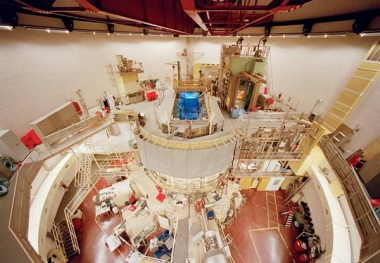The global shortage of medical isotopes is coming to an end after the restart of the High Flux Reactor (HFR) at Petten in the Netherlands.
The reactor has for a long time supplied about 60% of Europe's and 30% of the world's supply of medical radioactive sources for diagnosis, treatment and pain control. Repairs were needed to a coolant water pipe, and this was made difficult by the location of the pipe in concrete beneath the reactor itself.
 |
| HFR (Image: NRG) |
Before today's restart, the unit had been offline since February, with this outage coinciding with major repairs to the world's other major isotope producer, the National Research Universal unit at Chalk River in Canada. The NRU came back into operation only in mid August.
Fred Verzijlbergen, chair of the Dutch Association for Nuclear Medicine said: "Because the two largest isotope producers in the world were both out of action for repairs for quite some time, the medical world has had to cope with serious shortages of isotopes and long waiting lists for patients. I'm happy and relieved that this difficult period has come to an end." Without the two major producers, reliable but reduced supplies were maintained by close coordination between remaining main players: BR-2 at Mol in Belgium, Safari in South Africa and Osiris & Orphee at Saclay in France.
Verzijlbergen noted the need for new research reactor capable of producing medical isotopes and in particular molybdenum-99, which decays into technetium-99 en-route to hospitals. "We urgently need the new Pallas reactor in Pettern to prevent a repeat of this difficult situation in future," he said. The Nuclear Research and Consultancy Group (NRG), which operates HFR, submitted documentation to the Dutch government in November last year as a 'pre-starting note' ahead of an environmental impact assessment for Pallas.
NRG said at the time, "Key elements in the design of the new Pallas reactor are safety, reliability, flexibility and efficiency of operation. With Pallas, the Netherlands will ensure the continuity of their nuclear research, increase the security of supply of medical isotopes and extend their strong position held in these two globally developing markets."
According to NRG's current thinking, Pallas could be built around 2014 or 2015 and enter full operation during 2016. However, NRG noted that "this will be subject to the financial options and planning procedures."
Researched and written
by World Nuclear News




_18570.jpg)
_18938.jpg)
_33584.jpg)
_82983.jpg)





